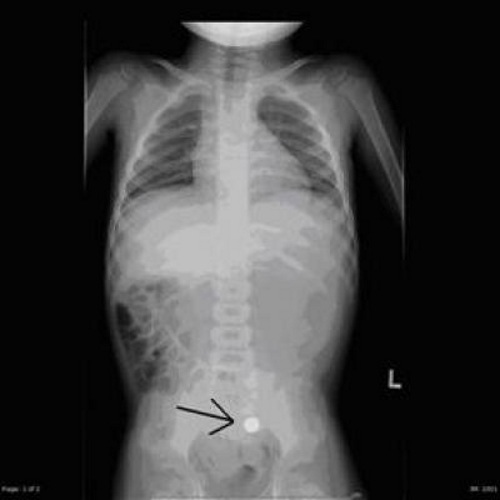Did you know that in 2013, there were more than 3,000 reported cases of accidental battery ingestion — the majority of which were committed by children under the age of six years old?

Each year, approximately 5 billion “button” batteries are produced across the world. Small and disc-shaped, these batteries power everything from children’s toys to hearing aids to greeting cards and more. And though recent legislation was passed requiring battery compartments in children’s toys to be secured with screws, many “adult” items like the latter two mentioned in the group above contain these batteries in easily accessible spots.
Swallowing a battery can cause serious physical harm to the individual; in some cases, it’s even led to death. More common, though, is damage to the esophagus and gut tissue.
“Ingested disc batteries require emergent removal from the esophagus,” says Giovanni Traverso, MB, BCh, Ph.D., a gastroenterologist at Massachusetts General Hospital and a researcher at MIT. “The swallowing of these batteries is a gastrointestinal emergency given that tissue damage starts as soon as the battery is in contact with the tissue, generating an electric current and leading to a chemical burn.”
To combat this issue, a Brigham and Women’s Hospital-led team developed a “coat of arm” to encase small batteries, rendering them harmless if accidentally ingested.
“To date, there has been no innovation to address this issue with small batteries,” says Jeff Karp, Ph.D., BWH Division of Biomedical Engineering in the Department of Medicine, Harvard Medical School, Harvard Stem Cell Institute. “To address this challenge we sought to develop something that would render the battery inert, specifically when it was outside of a device.”
Karp and first author Bryan Laulicht, Ph.D., a postdoctoral fellow in Karp’s lab, noticed when a battery sits within a device, there’s gentle pressure applied to it; when outside the device, though, no such force exists.
“We set out to create a specialized coating that could switch from an insulator to a conductor when subjected to pressure,” said co-author Robert Langer, Institute Professor from the Harvard-MIT Division of Health Sciences and Technology.
The scientists wound up looking into an off-the-shelf material known as quantum tunneling composite and discovered within it a nanoparticle-based coating which, when subjected to pressure, allows electrical current to pass through. When no pressure is applied, though, the coating material does not allow current to pass through.
Karp and Laulicht applied this coating to the anodes of the battery, or “minus” ends, and exposed both it and uncoated batteries to gut tissue in a laboratory dish and in living animals. In all cases, the coated batteries caused no damage; the uncoated batteries, on the other hand, caused significant damage.
Along with reducing injuries, the team’s approach is also cost-effective. “The ultimate cost will depend on the exact composition of the material that is used, but for our current formulation, we're talking cents, not dollars,” said Laulicht.
Karp and his colleagues plan to next determine the best route toward manufacturing and scaling up to a much larger amount of batteries, and then working with manufacturers to get the coated batteries into the hands of consumers.
If you’d like to learn more about this project, read the group’s paper, published online November 3, 2014 on the Proceedings of the National Academy of Sciences website.
Via eurekalert.org
Advertisement
Learn more about Electronic Products Magazine





